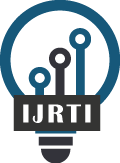|
International Journal for Research Trends and Innovation
International Peer Reviewed & Refereed Journals, Open Access Journal
ISSN Approved Journal No: 2456-3315 | Impact factor: 8.14 | ESTD Year: 2016
Scholarly open access journals, Peer-reviewed, and Refereed Journals, Impact factor 8.14 (Calculate by google scholar and Semantic Scholar | AI-Powered Research Tool) , Multidisciplinary, Monthly, Indexing in all major database & Metadata, Citation Generator, Digital Object Identifier(DOI)
|
Issue: October 2025
Volume 10 | Issue 10
Review Result and Publication of Paper within : 2-3 days
Click Here For more DetailsFor Authors
Forms / Download
Published Issue Details
Editorial Board
Other IMP Links
Facts & Figure
Impact Factor : 8.14
Issue per Year : 12
Volume Published : 10
Issue Published : 113
Article Submitted : 18006
Article Published : 7746
Total Authors : 20484
Total Reviewer : 747
Total Countries : 140
Indexing Partner
Licence
This work is licensed under a Creative Commons Attribution-NonCommercial 4.0 International License







|
Published Paper Details
|
|
| Paper Title: | SOLAR CELL DEFECT DETECTION AND ANALYSIS SYSTEM USING DEEP LEARNING |
| Authors Name: | Shrayanth S , Siddhartha J , Laxmi V |
| Download E-Certificate: | Download |
| Author Reg. ID: |
IJRTI_189831
|
| Published Paper Id: | IJRTI2405025 |
| Published In: | Volume 9 Issue 5, May-2024 |
| DOI: | |
| Abstract: | Deep learning is emerging as a game-changer in the quest for ever-more efficient solar panels. At the heart of this innovation lies a technique called convolutional neural networks (CNNs). Imagine CNNs as sophisticated image analysis tools. By being trained on massive datasets containing countless images of solar panels with various defects like cracks, corrosion, and misprints, these CNNs become adept at identifying such issues automatically. This early detection capability is crucial. Traditionally, visual inspections were time-consuming and prone to human error. Deep learning offers a faster, more accurate approach, allowing for preventative maintenance before defects significantly impact a panel's performance. The benefits extend beyond just accuracy and speed. Deep learning helps predict the potential impact of a specific defect on energy output. Armed with this knowledge, technicians can prioritize repairs and ensure optimal energy generation from the entire solar array. The ripple effect is significant. Reliable, long-lasting solar panels translate to a more robust and cost-effective solar energy sector. Furthermore, this technology holds immense promise for the future. By harnessing the power of deep learning, solar energy is poised to play an even greater role in building a sustainable future. |
| Keywords: | CNN, Deep Learning, Tenser Flow, Electroluminescence |
| Cite Article: | "SOLAR CELL DEFECT DETECTION AND ANALYSIS SYSTEM USING DEEP LEARNING", International Journal of Science & Engineering Development Research (www.ijrti.org), ISSN:2455-2631, Vol.9, Issue 5, page no.162 - 167, May-2024, Available :http://www.ijrti.org/papers/IJRTI2405025.pdf |
| Downloads: | 000205208 |
| ISSN: |
2456-3315 | IMPACT FACTOR: 8.14 Calculated By Google Scholar| ESTD YEAR: 2016 An International Scholarly Open Access Journal, Peer-Reviewed, Refereed Journal Impact Factor 8.14 Calculate by Google Scholar and Semantic Scholar | AI-Powered Research Tool, Multidisciplinary, Monthly, Multilanguage Journal Indexing in All Major Database & Metadata, Citation Generator |
| Publication Details: |
Published Paper ID: IJRTI2405025
Registration ID:189831
Published In: Volume 9 Issue 5, May-2024
DOI (Digital Object Identifier):
Page No: 162 - 167 Country: Bengaluru, Karnataka, India Research Area: Computer Science & Technology Publisher : IJ Publication Published Paper URL : https://www.ijrti.org/viewpaperforall?paper=IJRTI2405025 Published Paper PDF: https://www.ijrti.org/papers/IJRTI2405025 |
| Share Article: | |
|
Click Here to Download This Article |
|
| Article Preview | |
|
|
|
Major Indexing from www.ijrti.org
| Google Scholar | ResearcherID Thomson Reuters | Mendeley : reference manager | Academia.edu |
| arXiv.org : cornell university library | Research Gate | CiteSeerX | DOAJ : Directory of Open Access Journals |
| DRJI | Index Copernicus International | Scribd | DocStoc |
ISSN Details
 |
 |
ISSN: 2456-3315
Impact Factor: 8.14 and ISSN APPROVED,
Journal Starting Year (ESTD) : 2016
DOI (A digital object identifier)
 Providing A digital object identifier by DOI.ONE How to Get DOI? |
Conference
Open Access License Policy
Important Details
Join RMS/Earn 300
WhatsApp
Click Here
Click Here
Indexing Partner |
|||
| Copyright © 2025 - All Rights Reserved - IJRTI | |||






